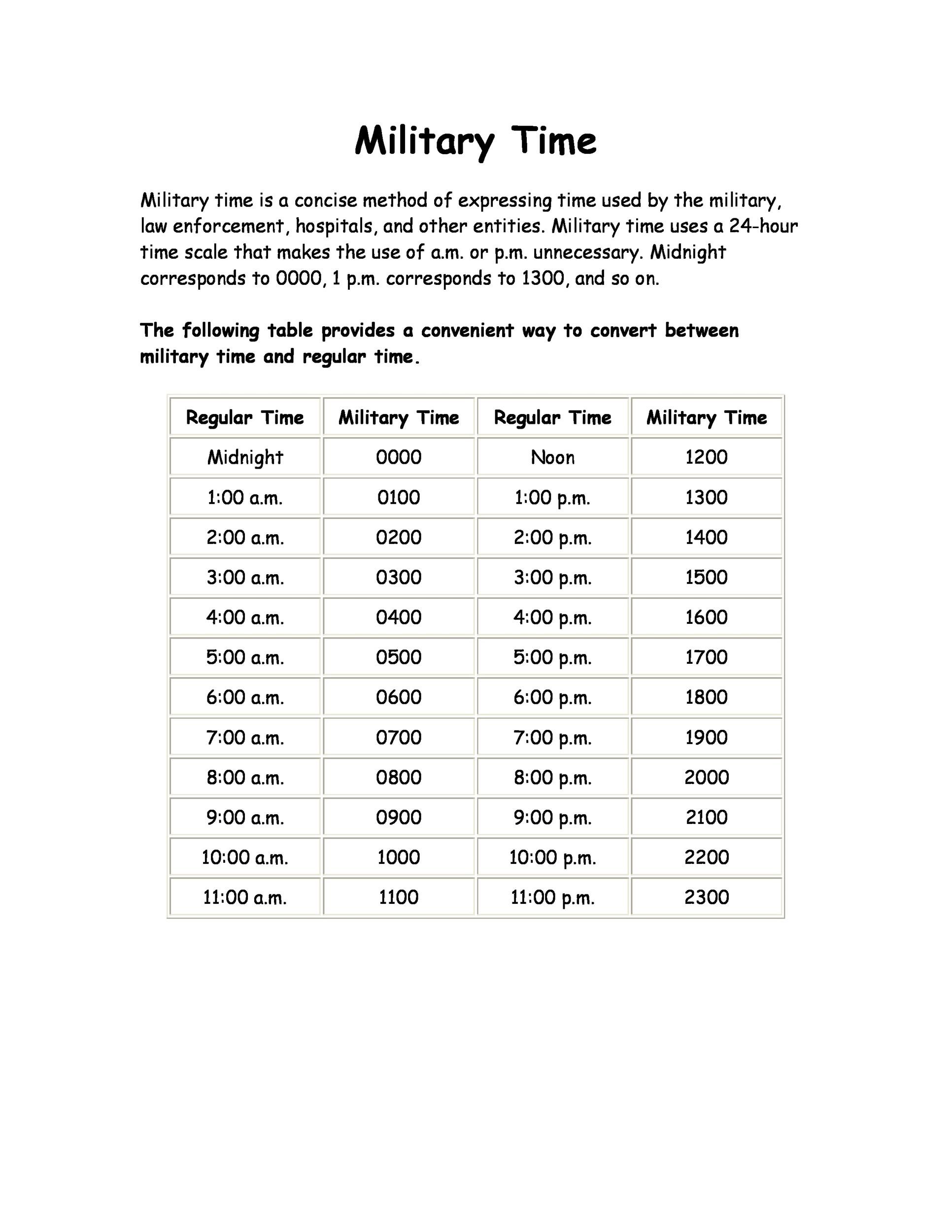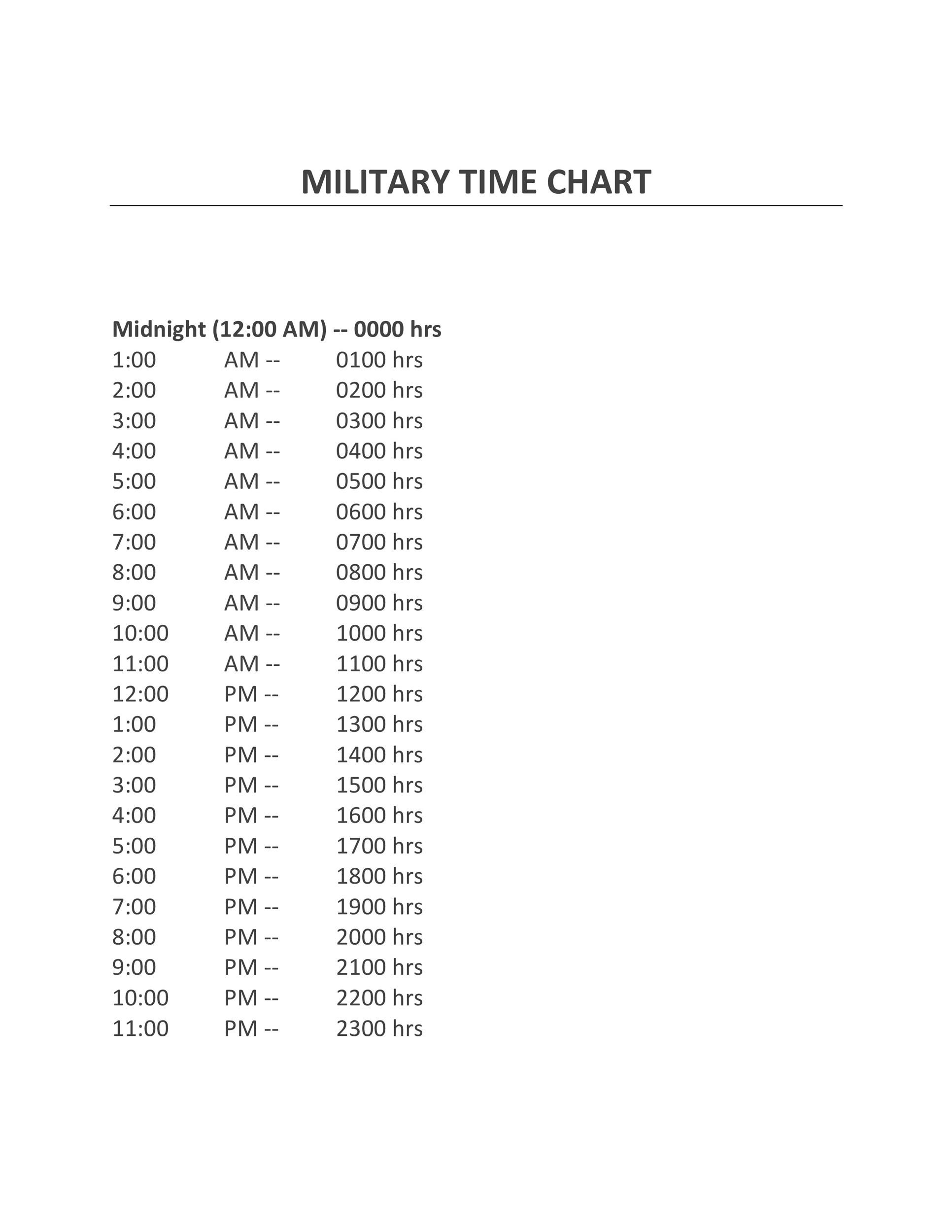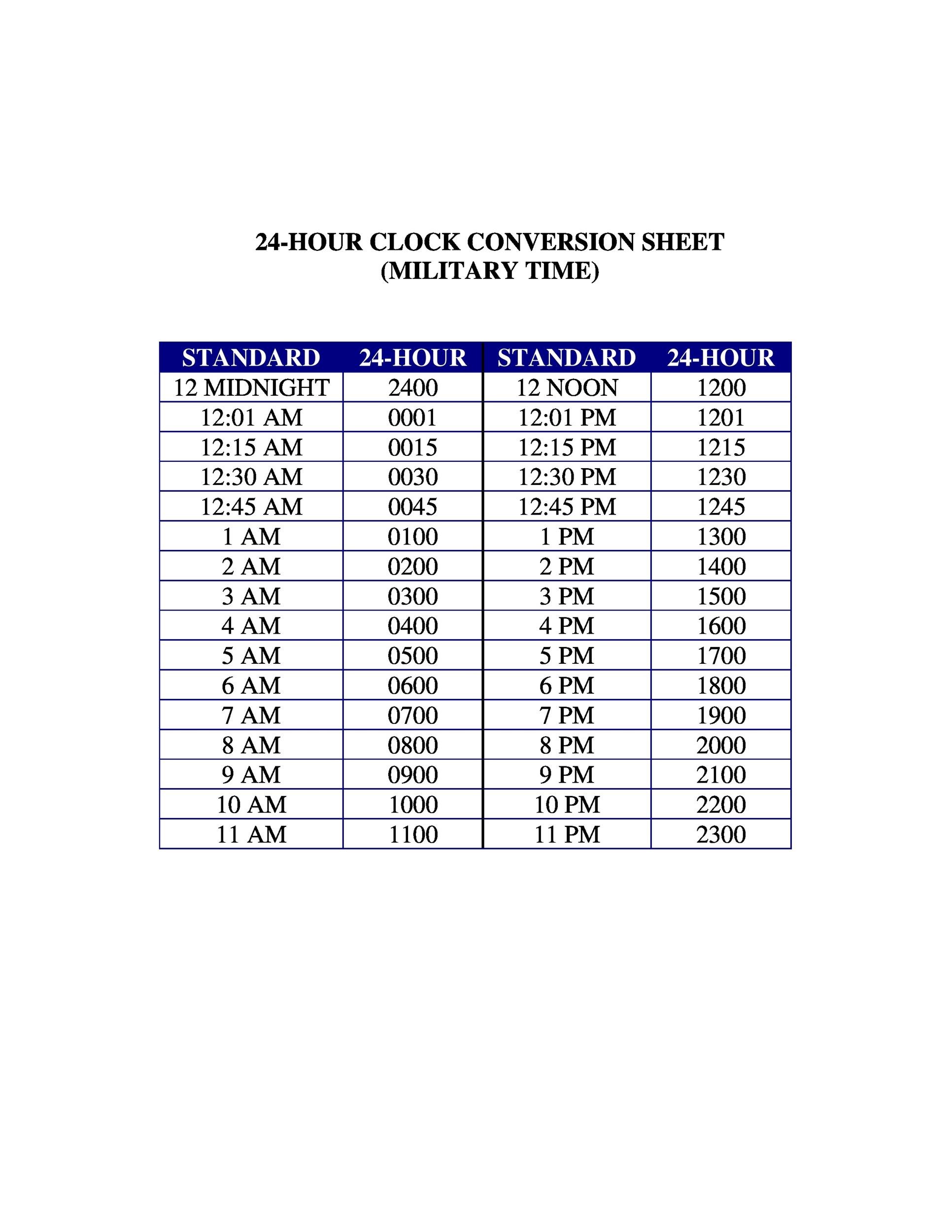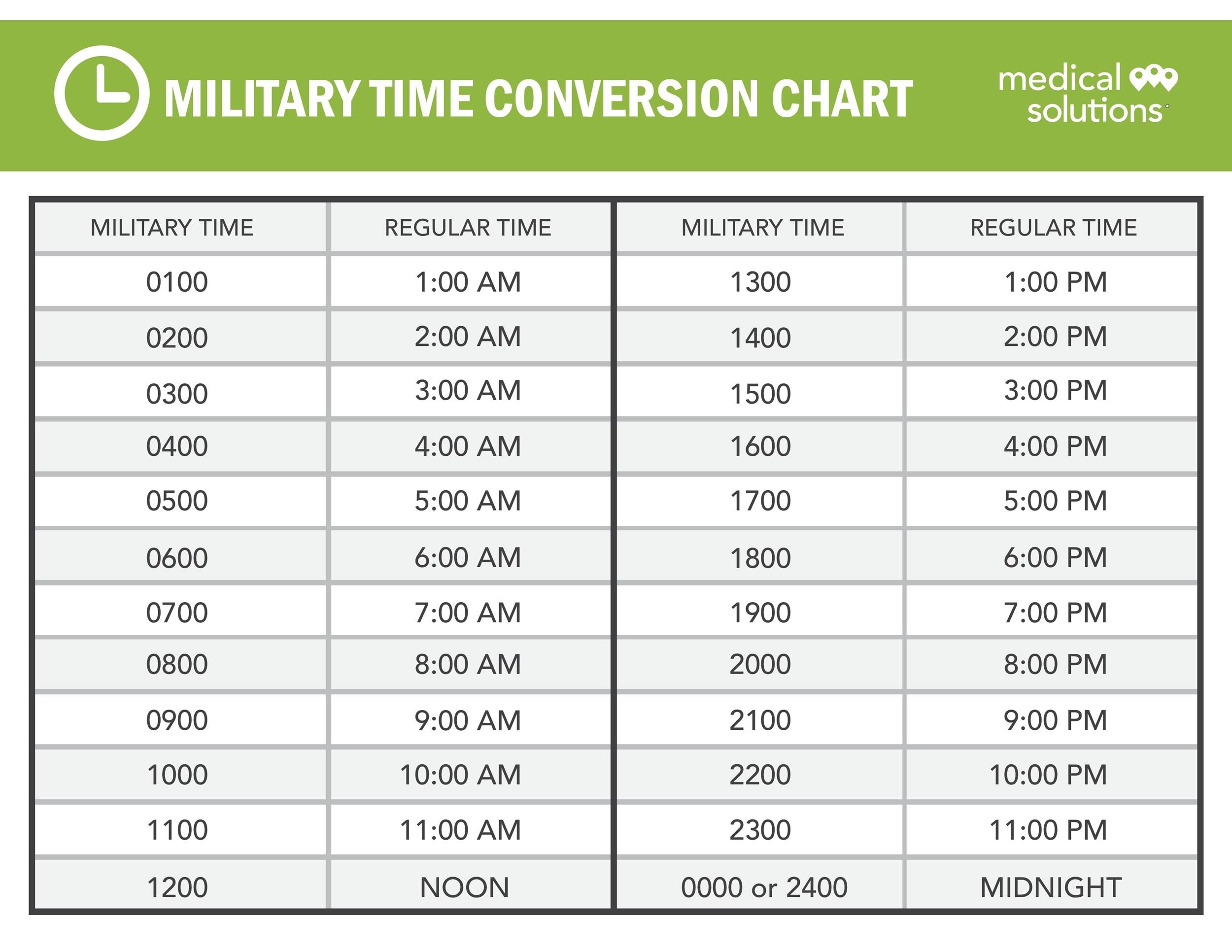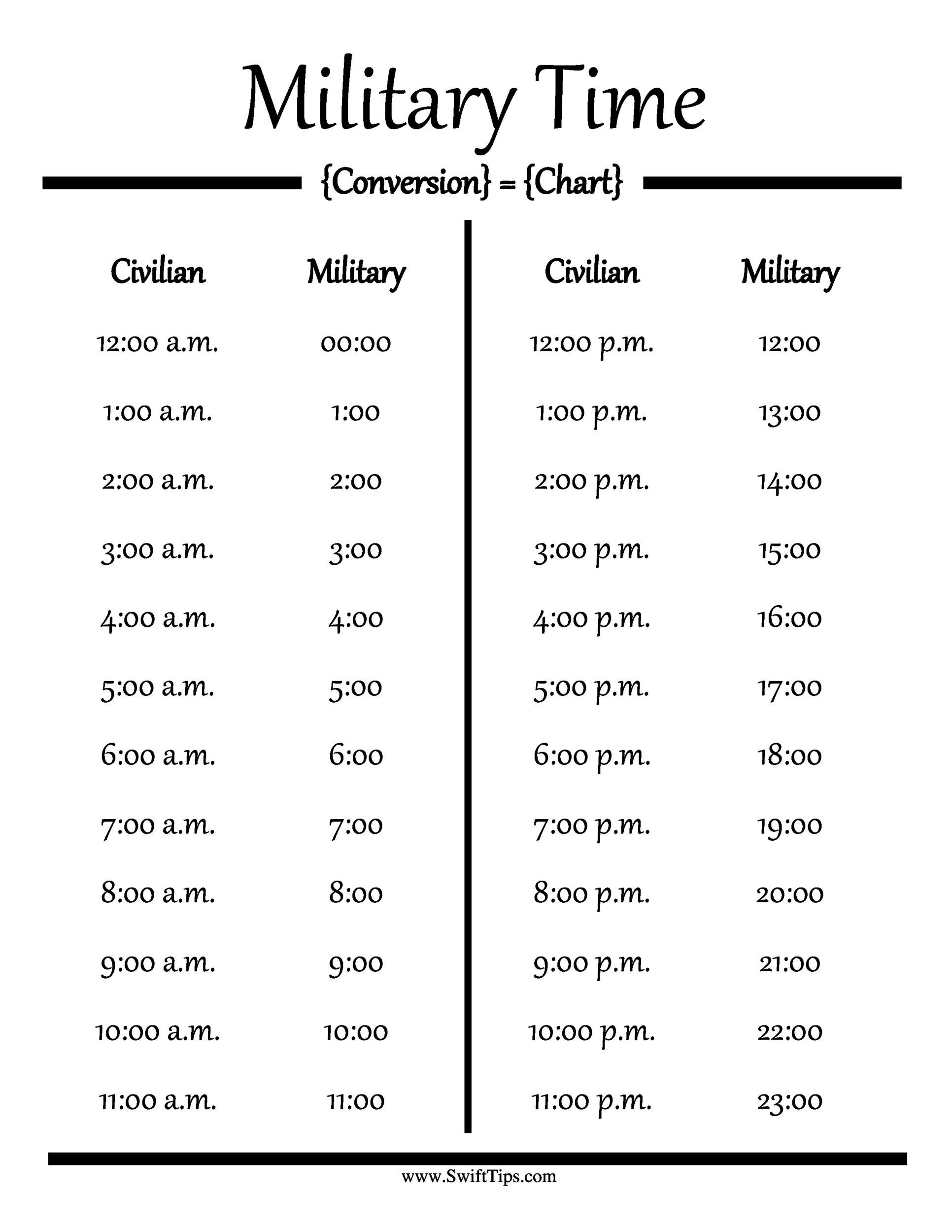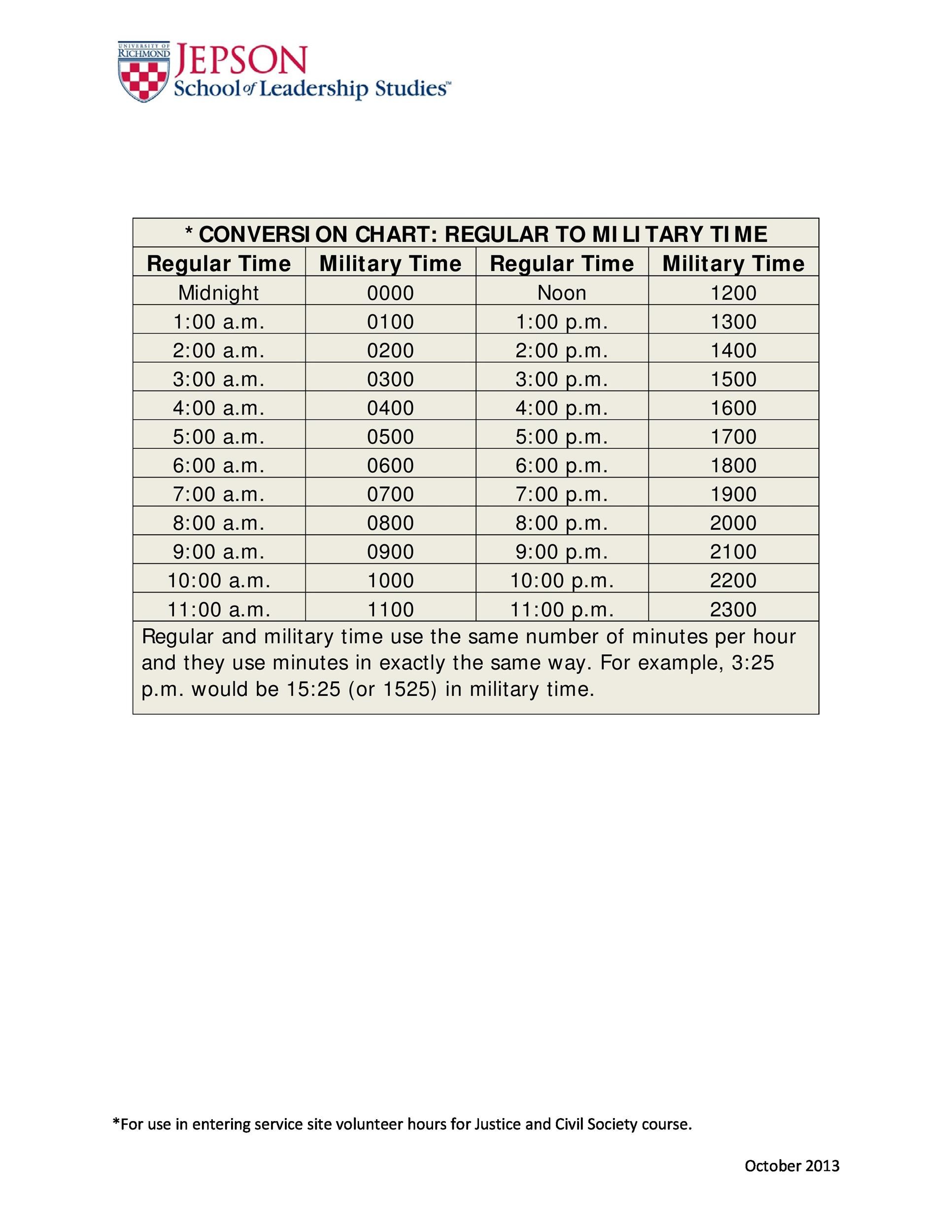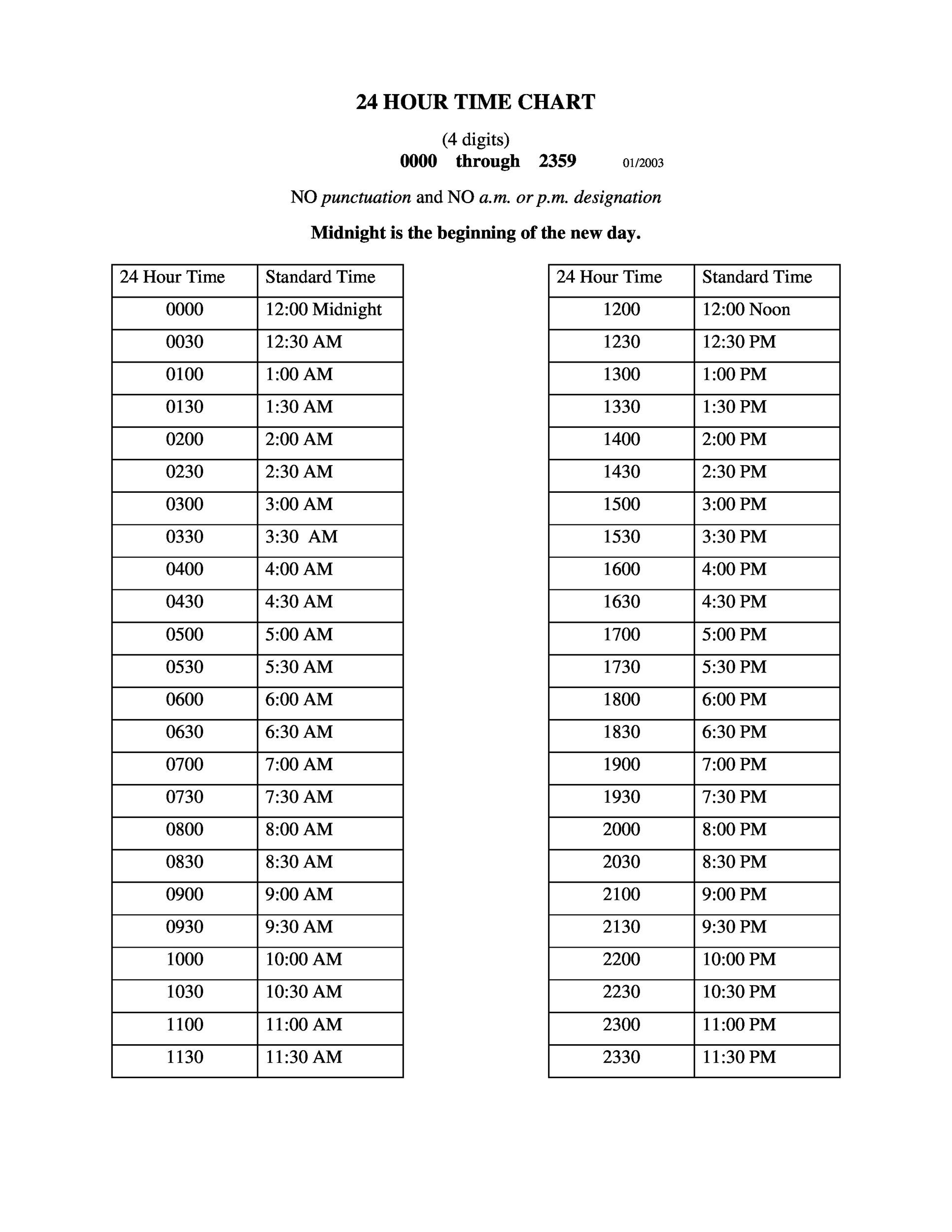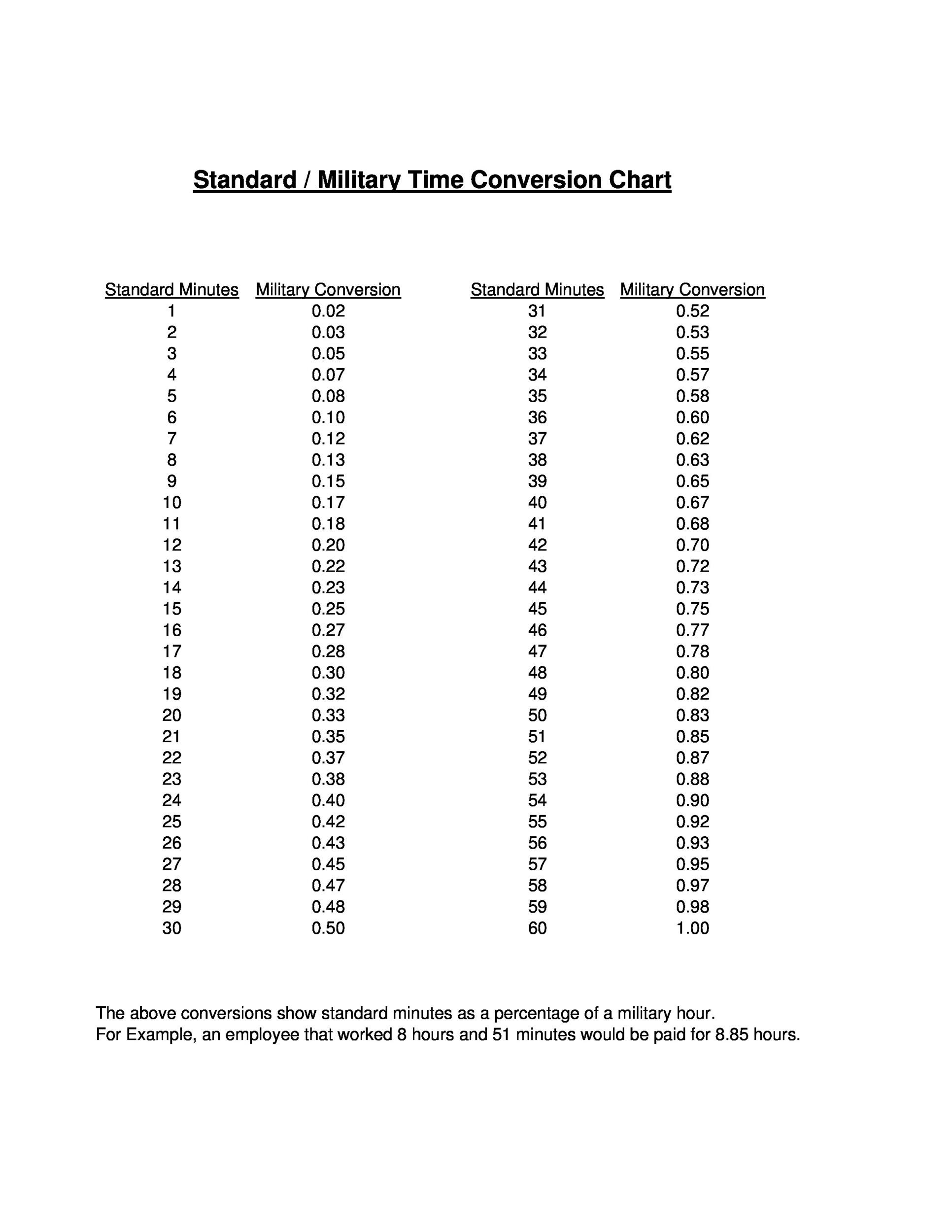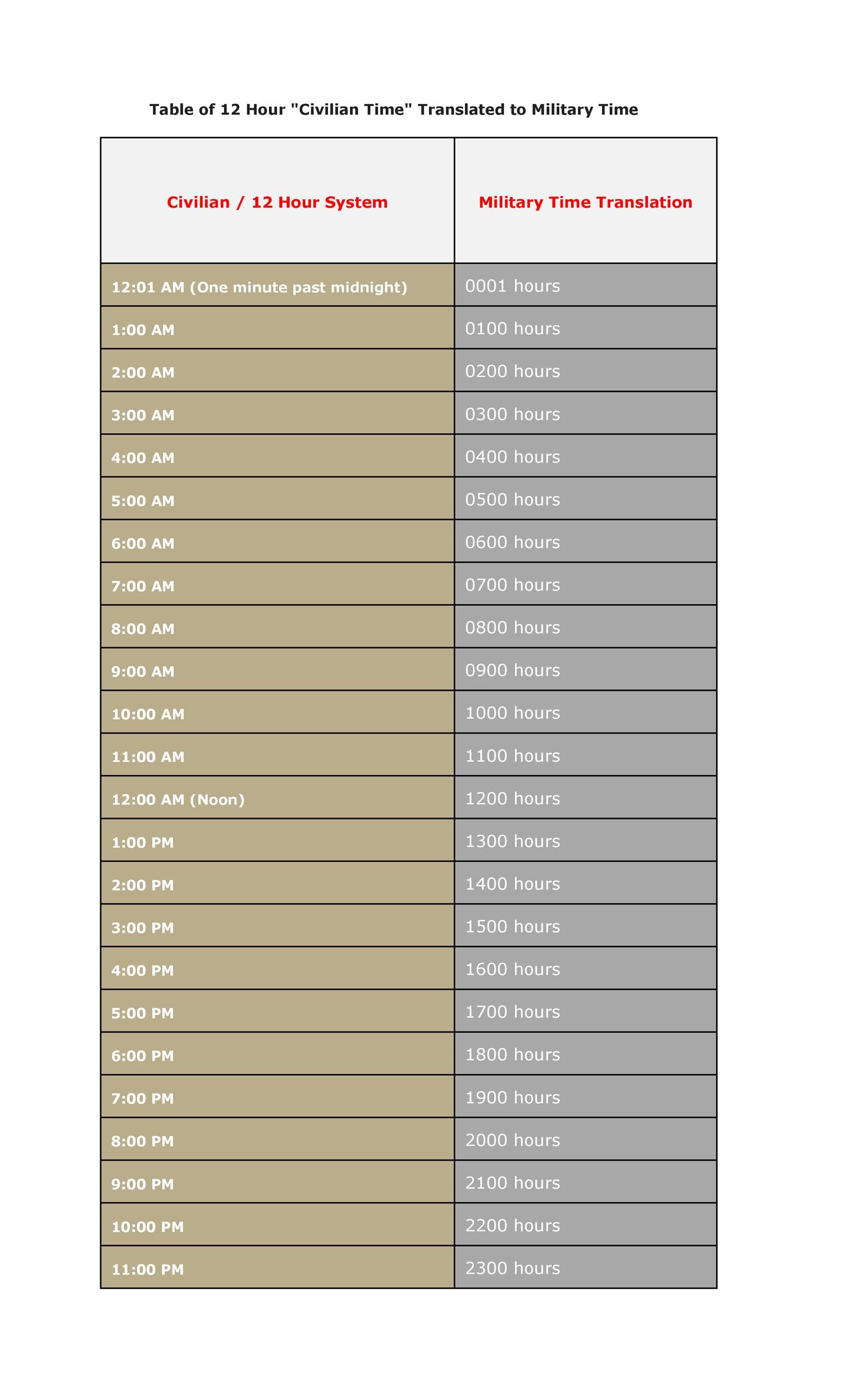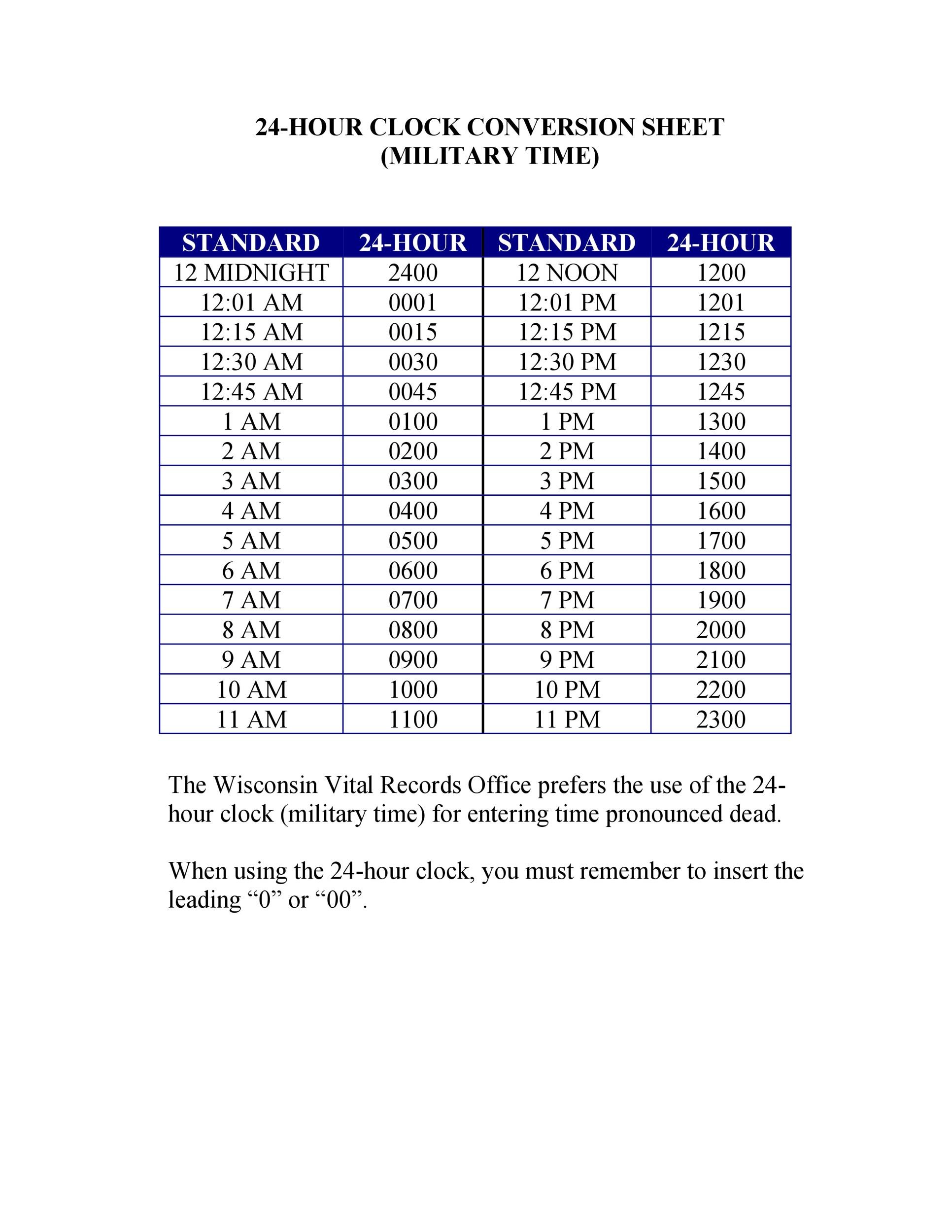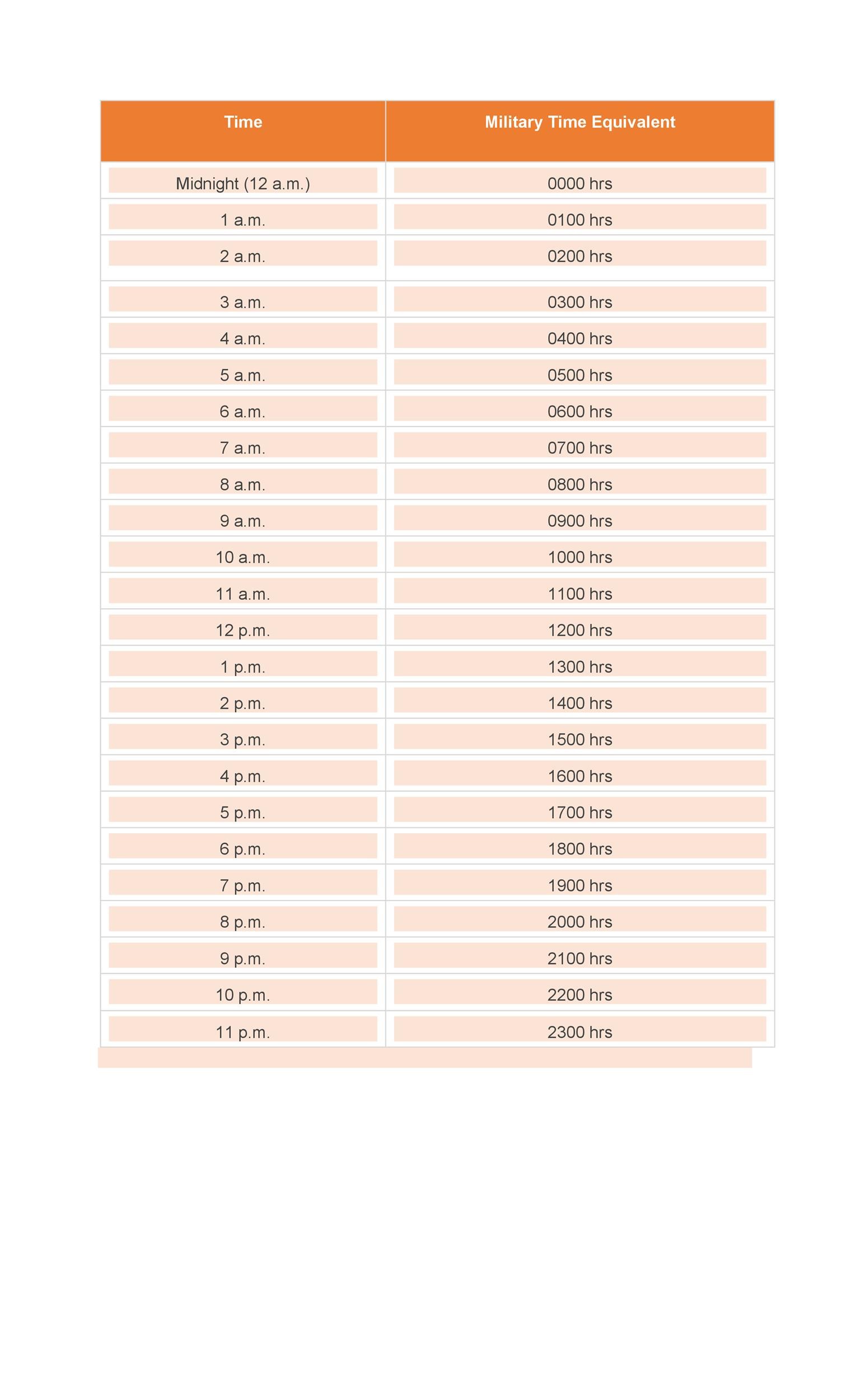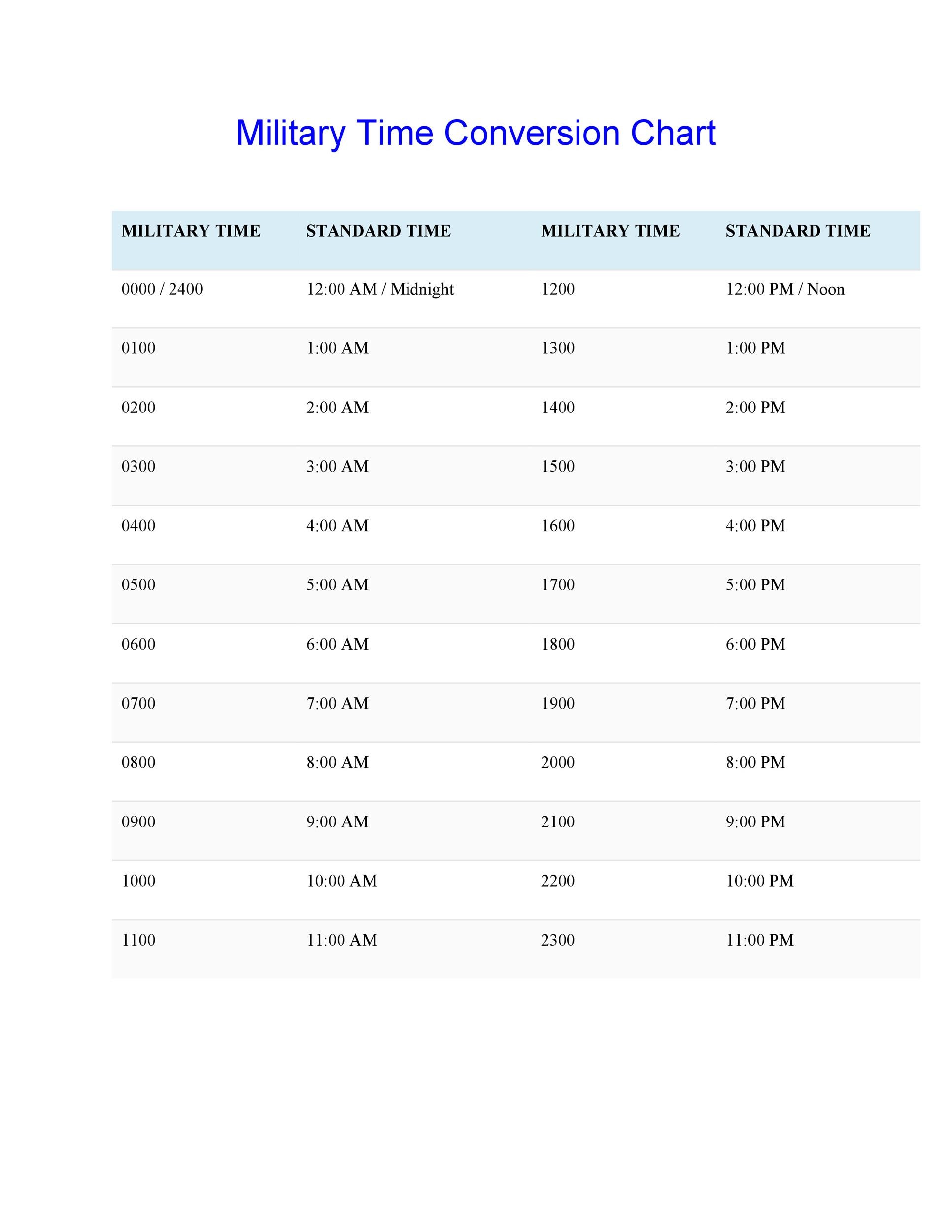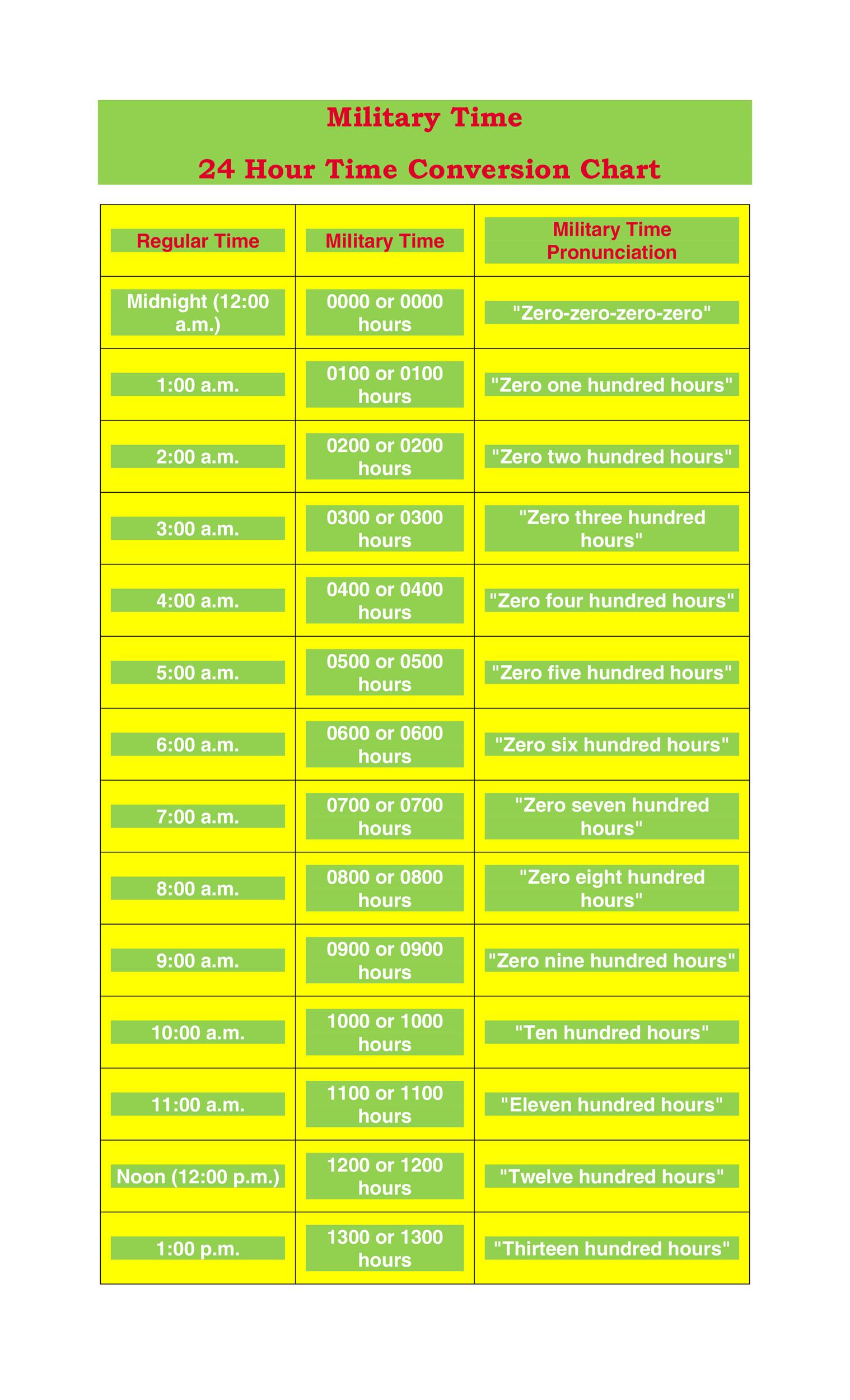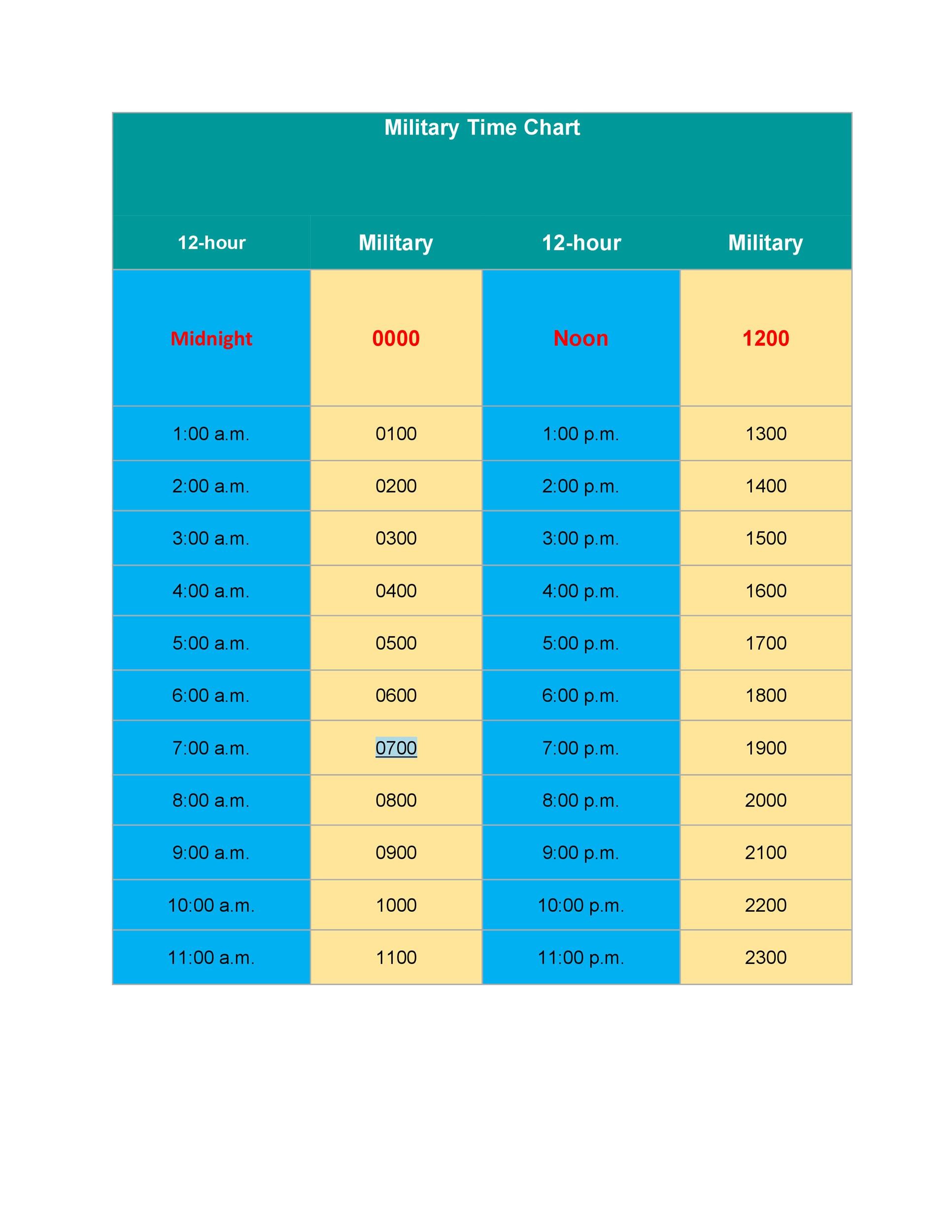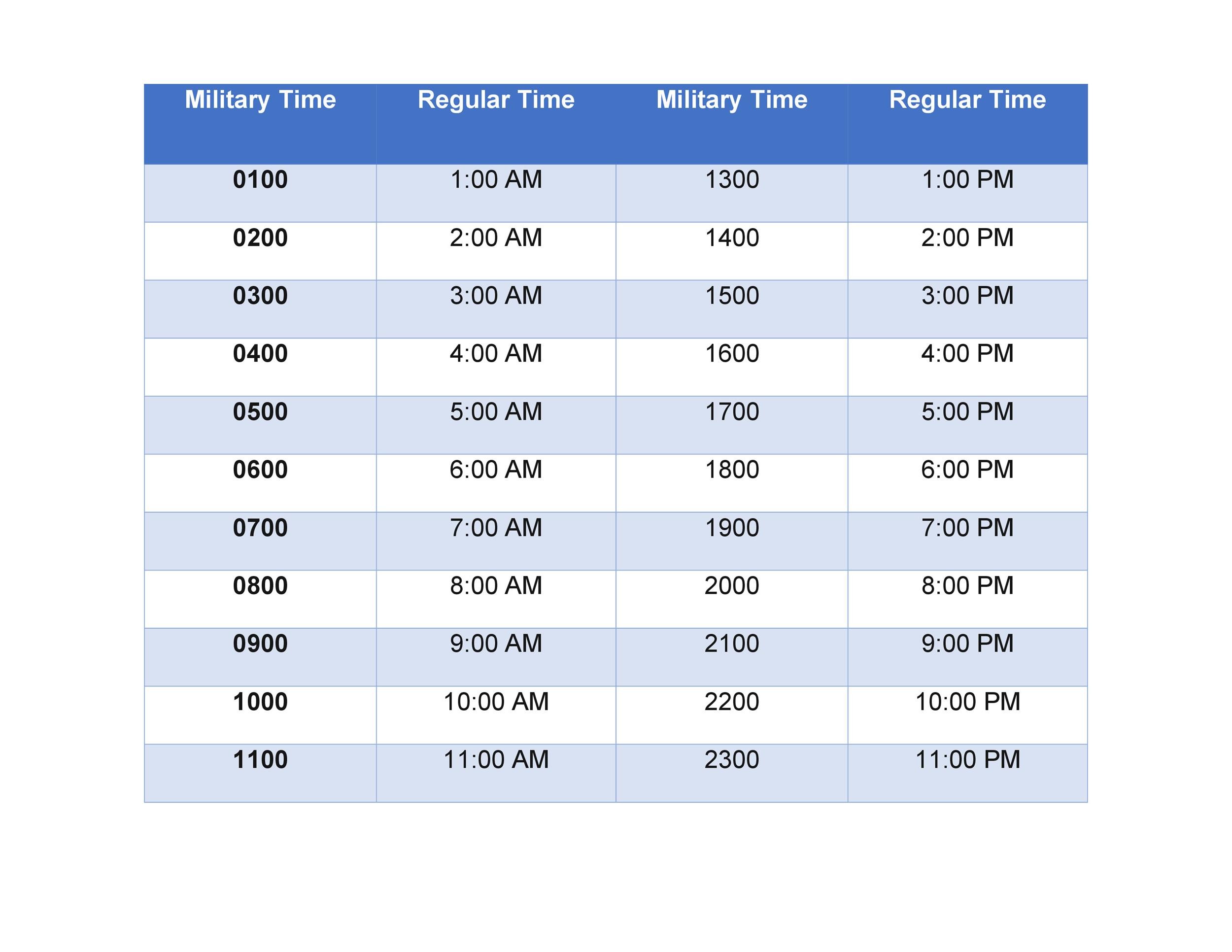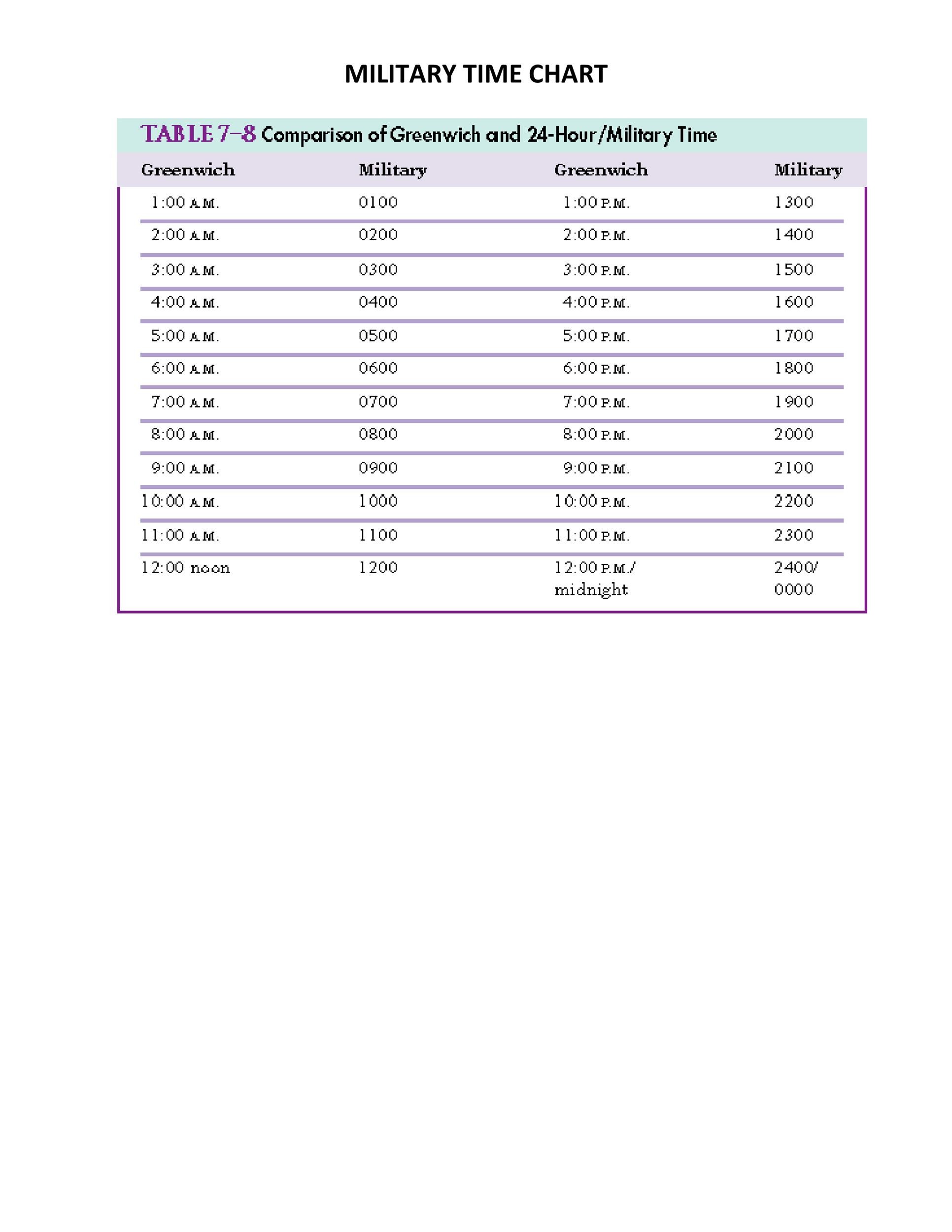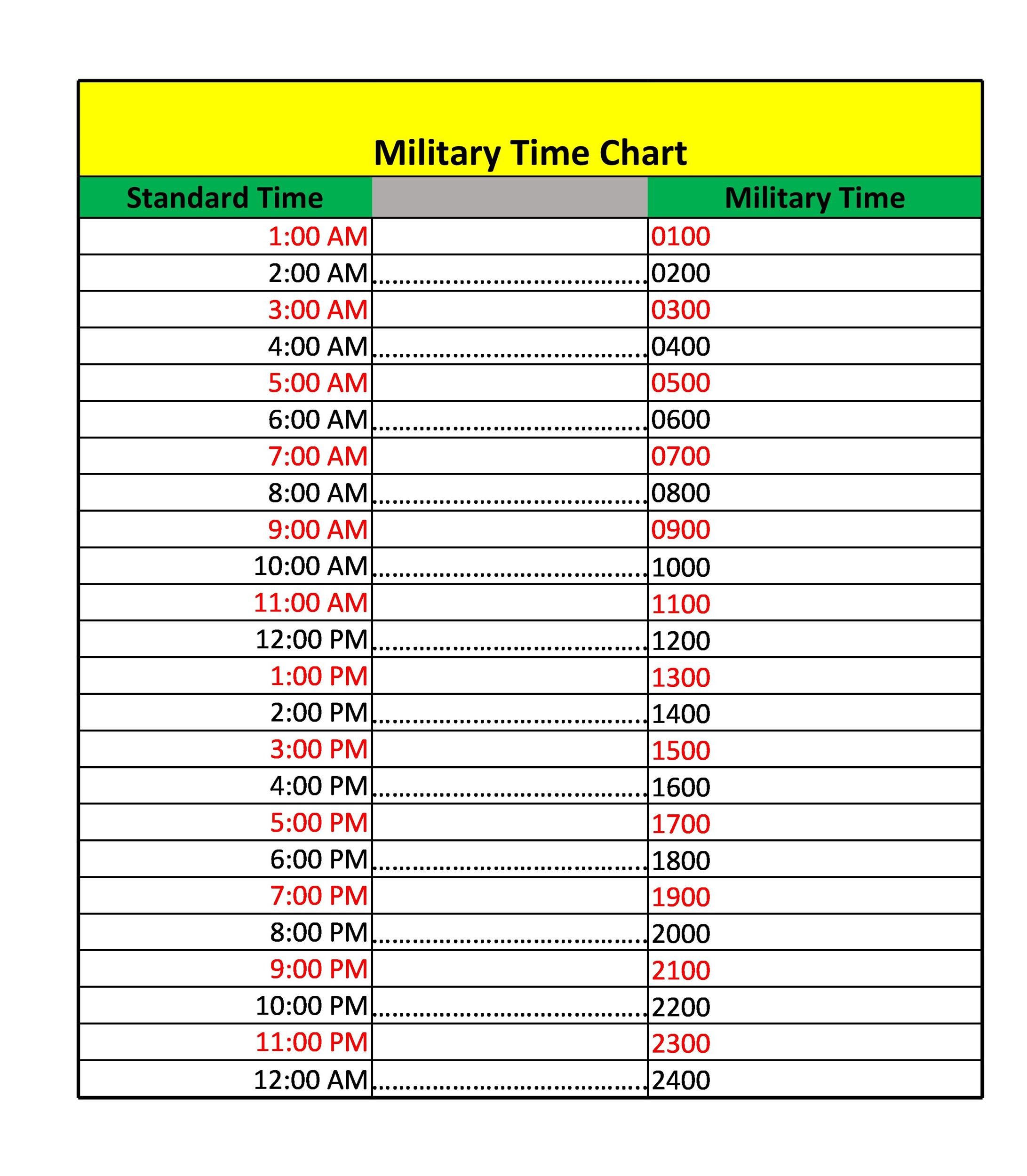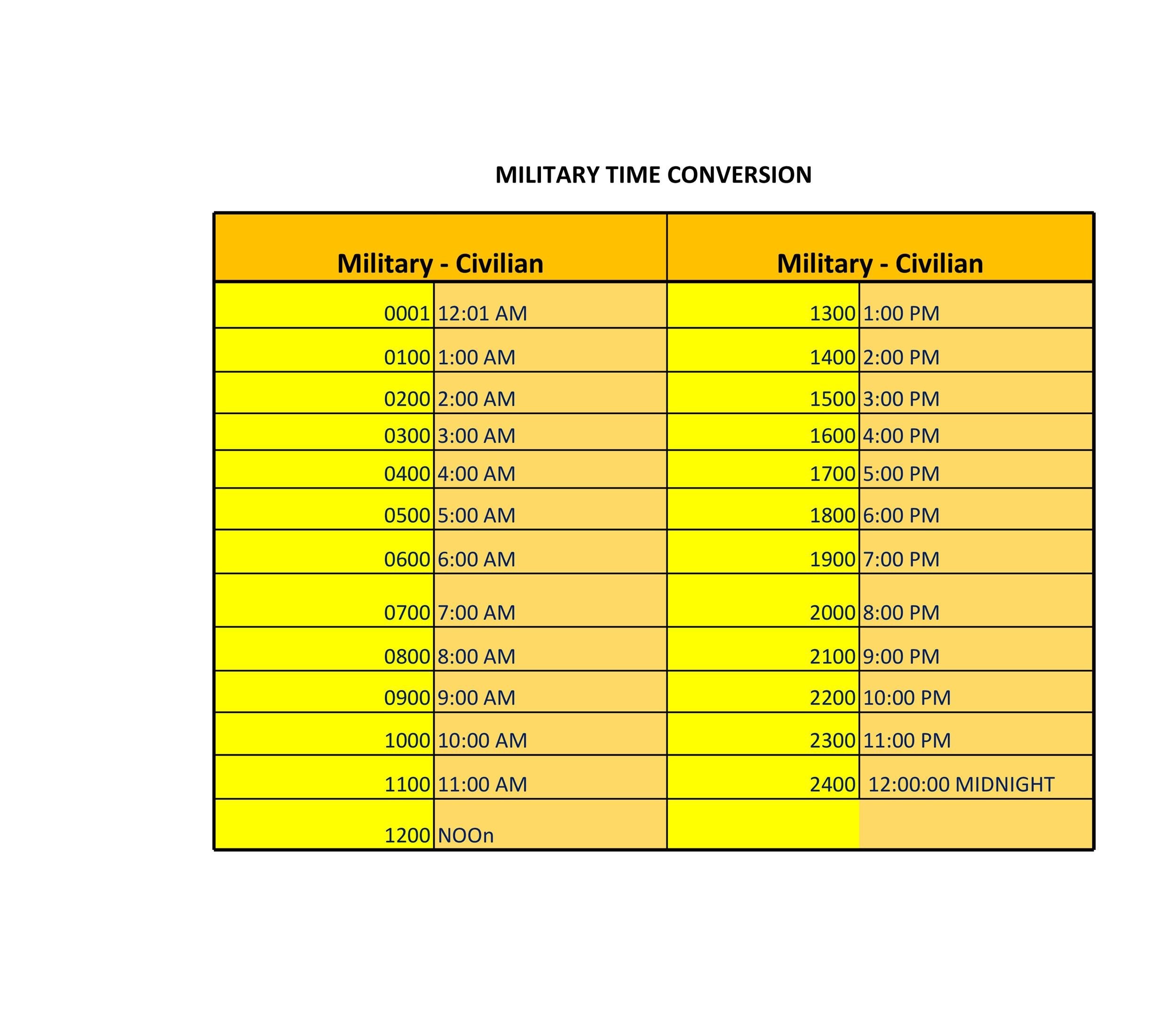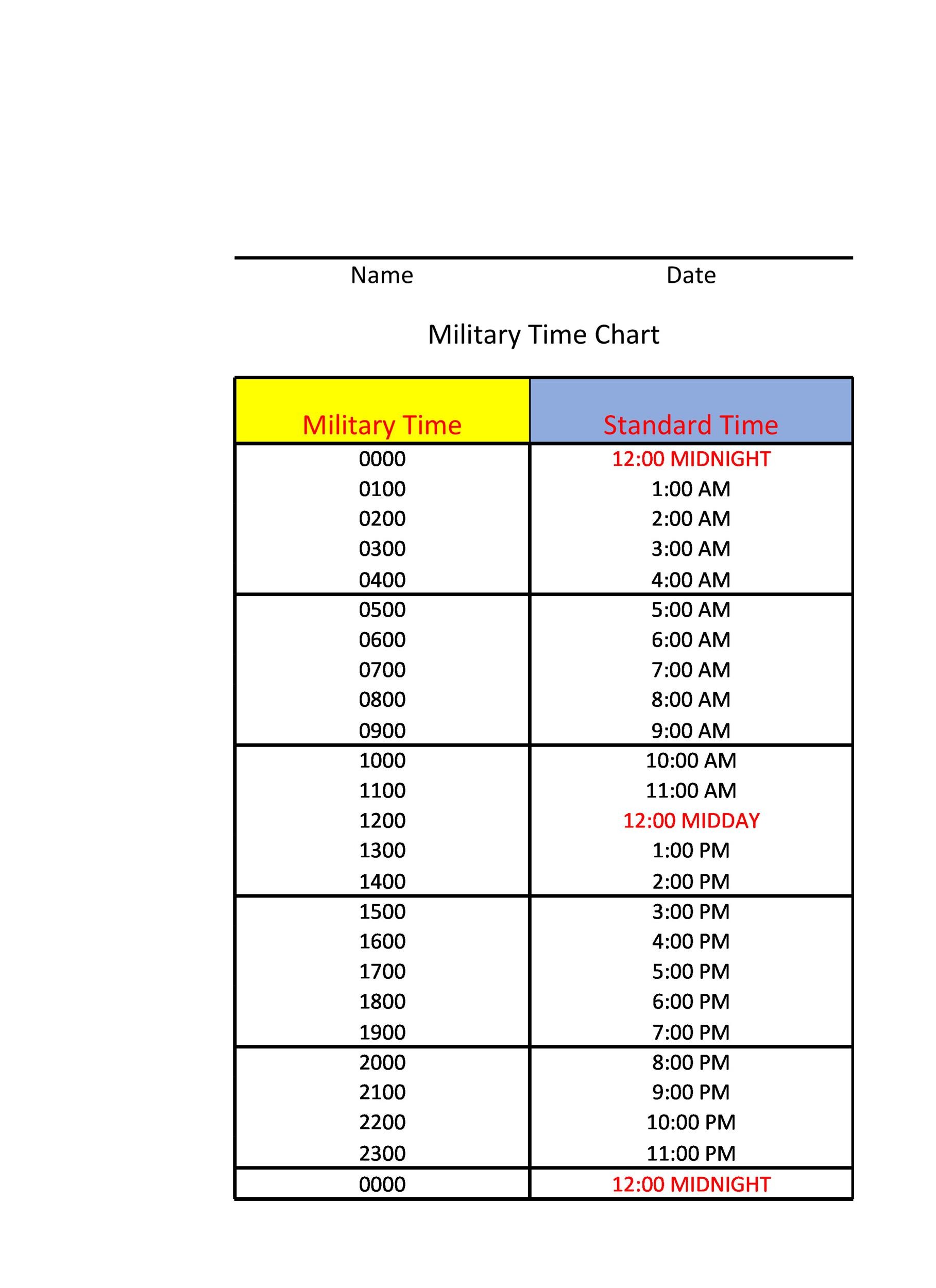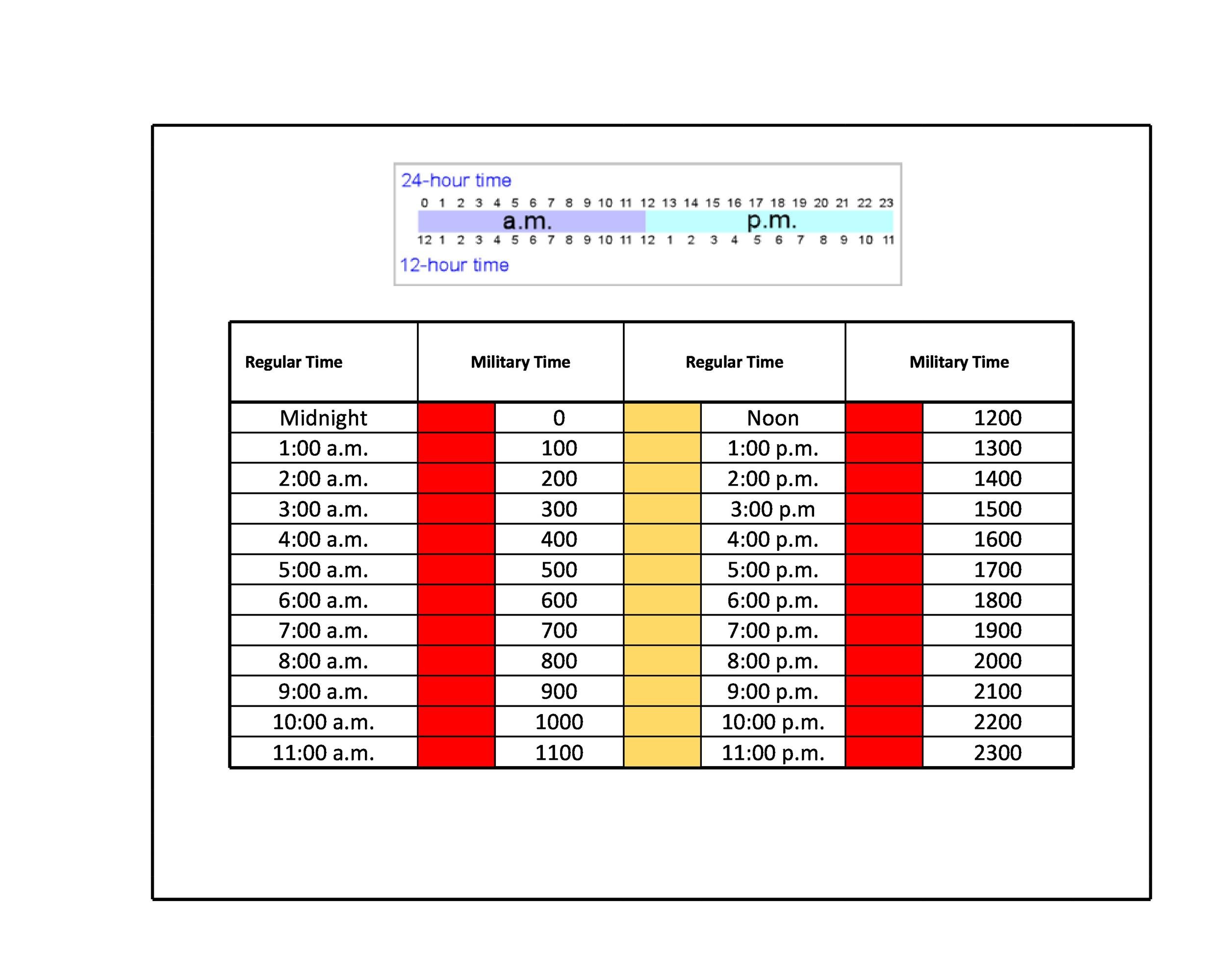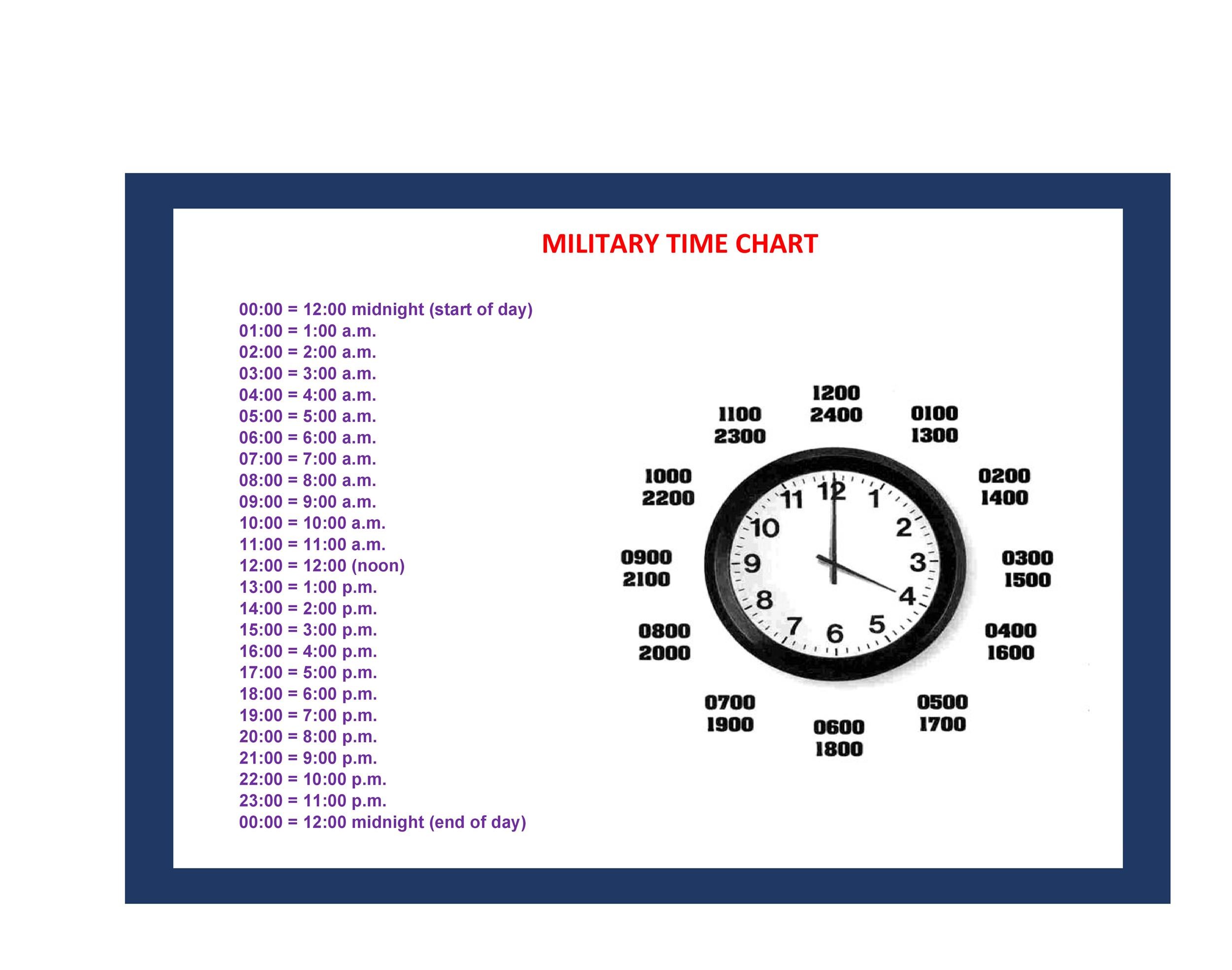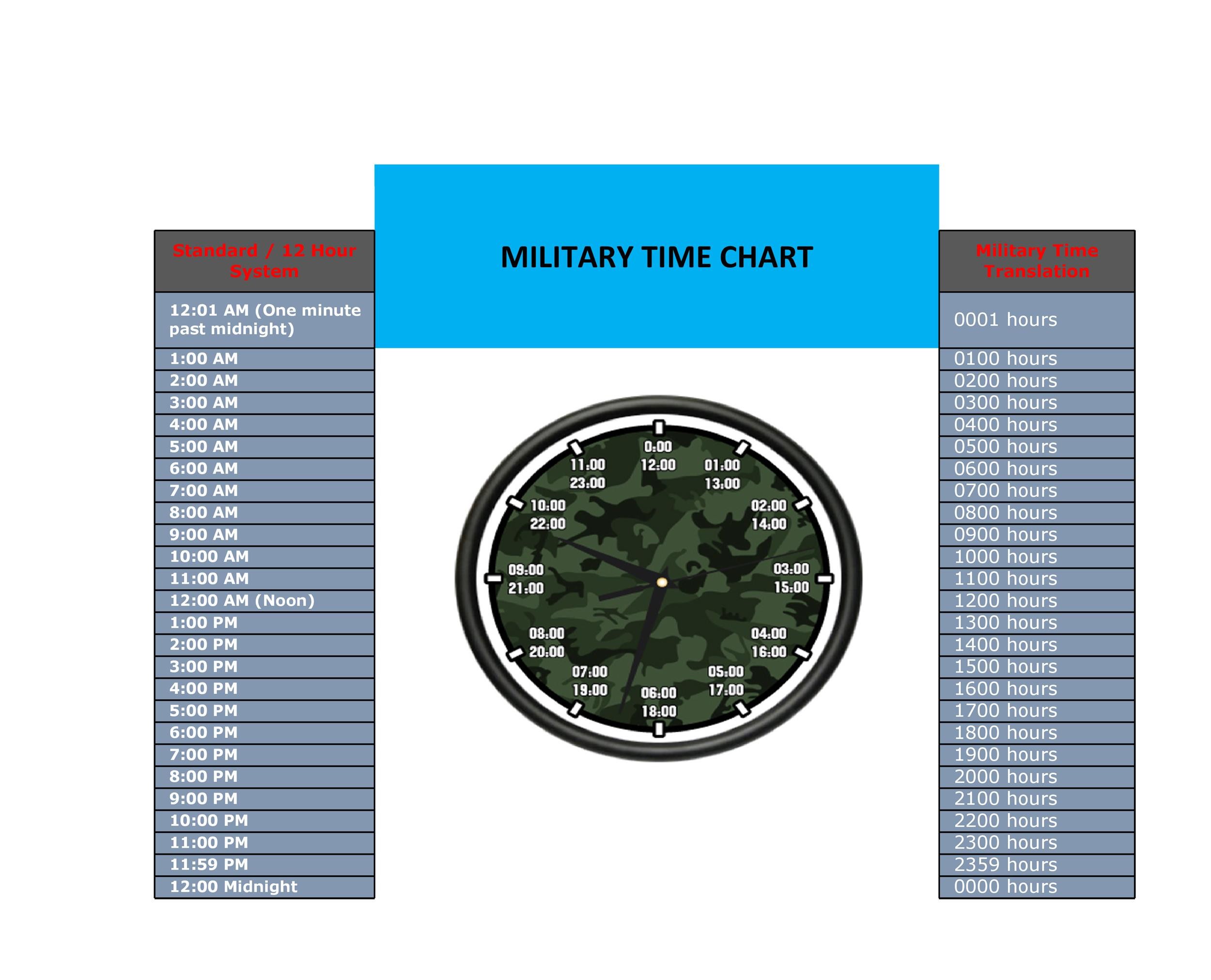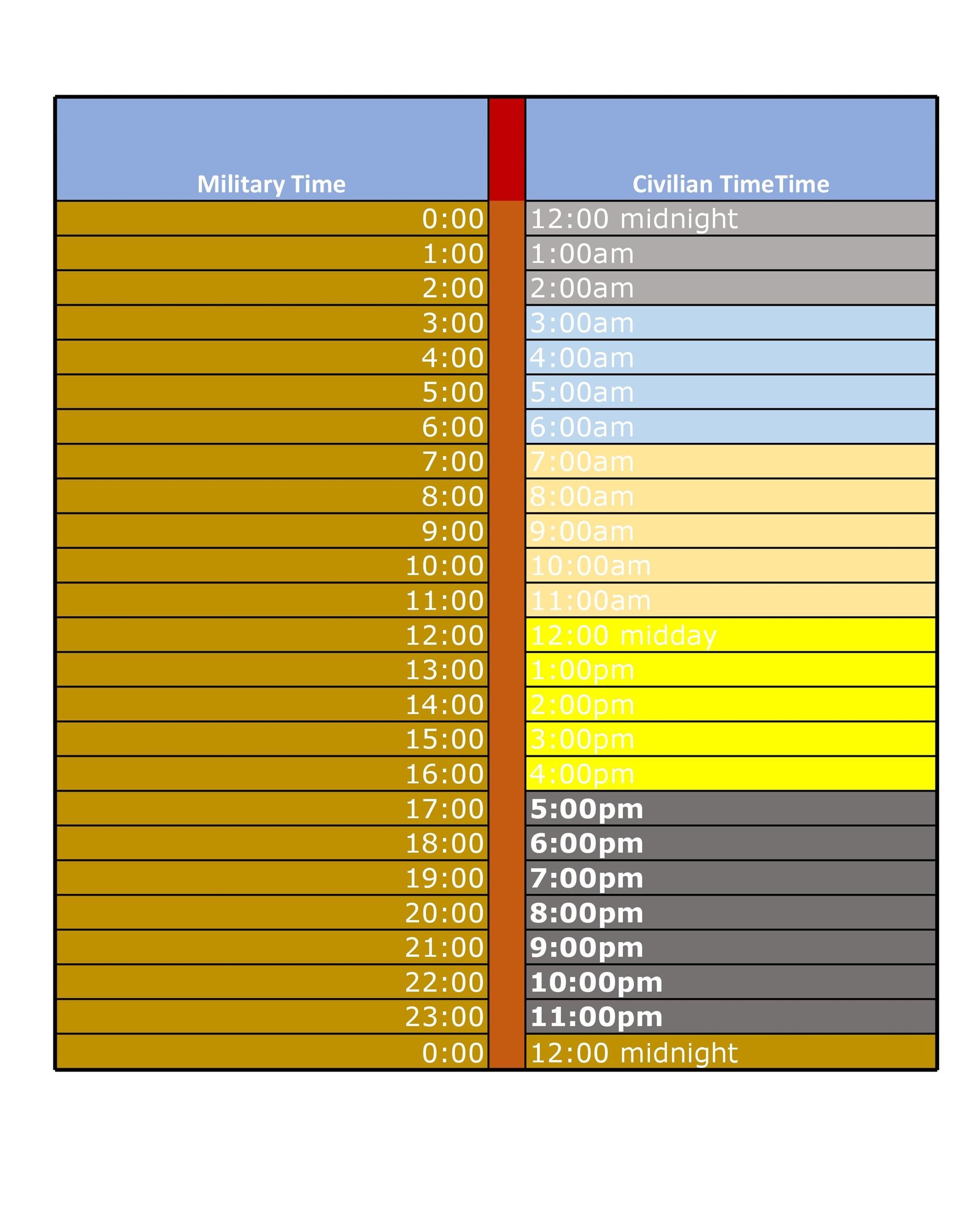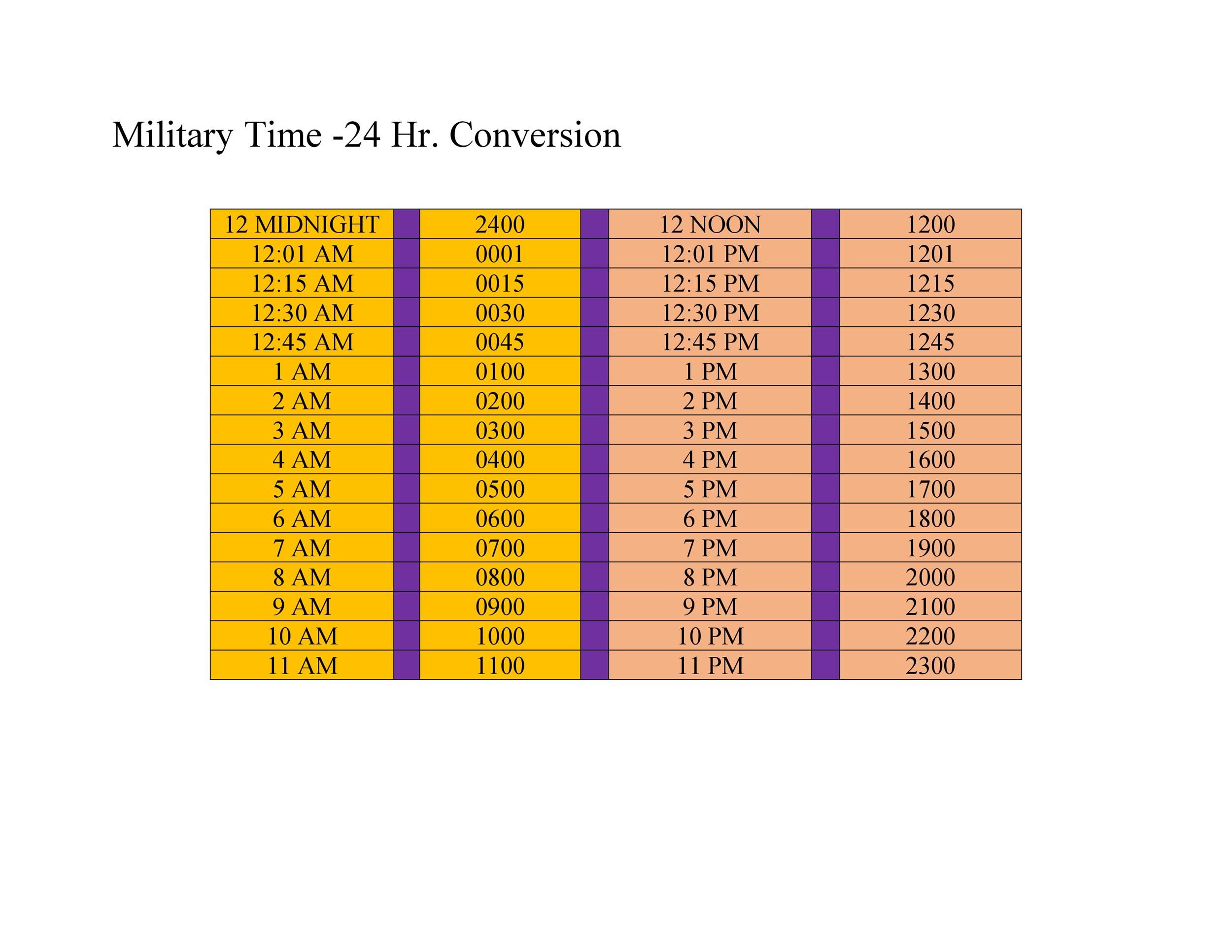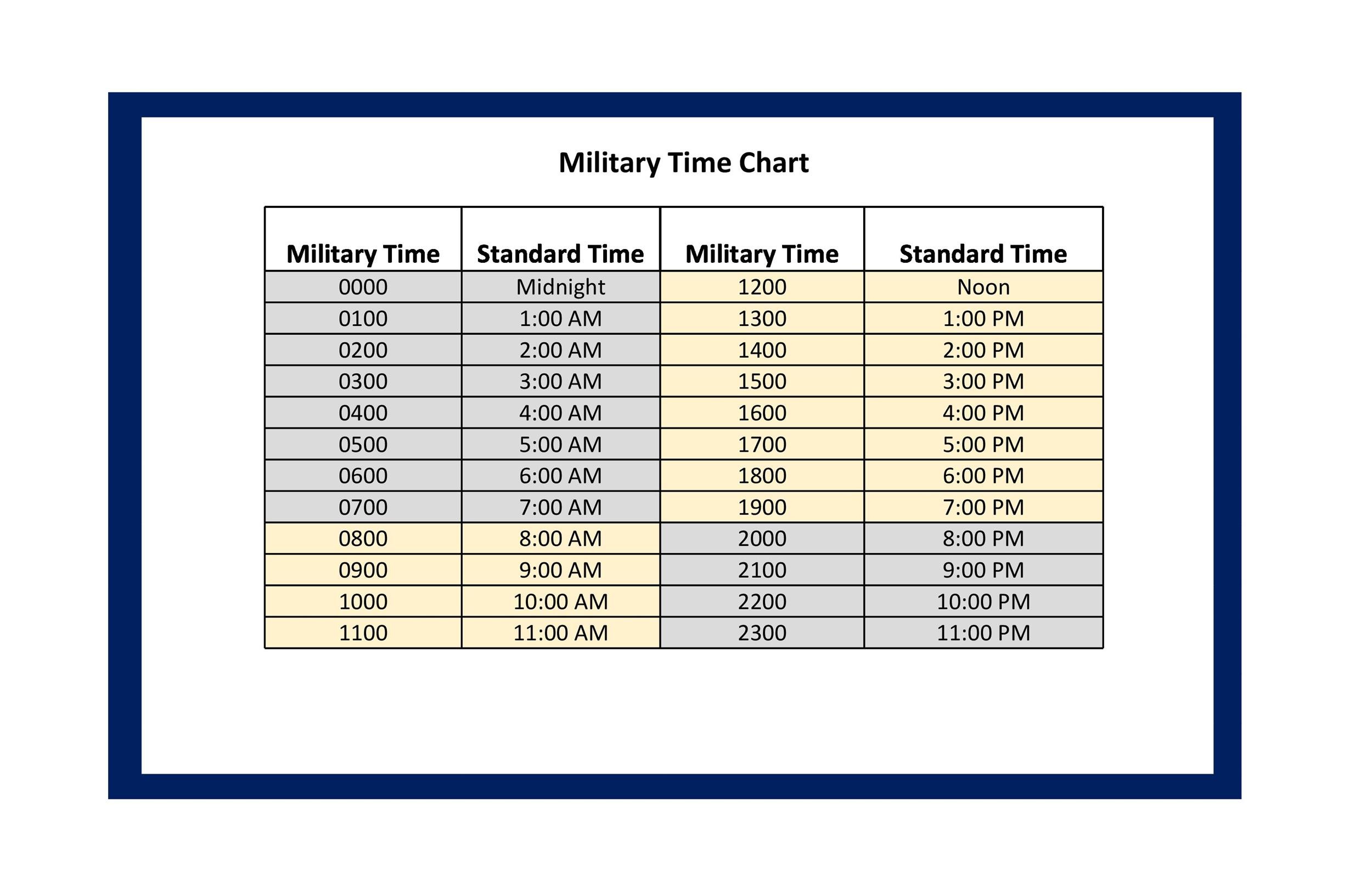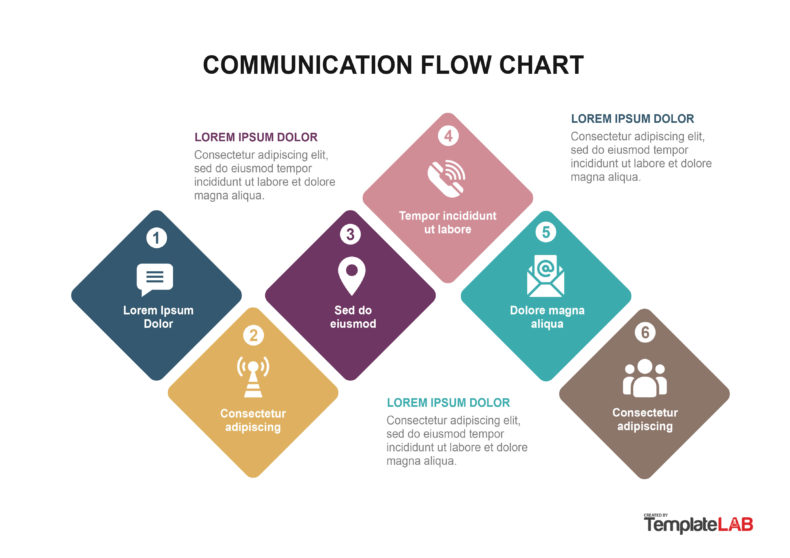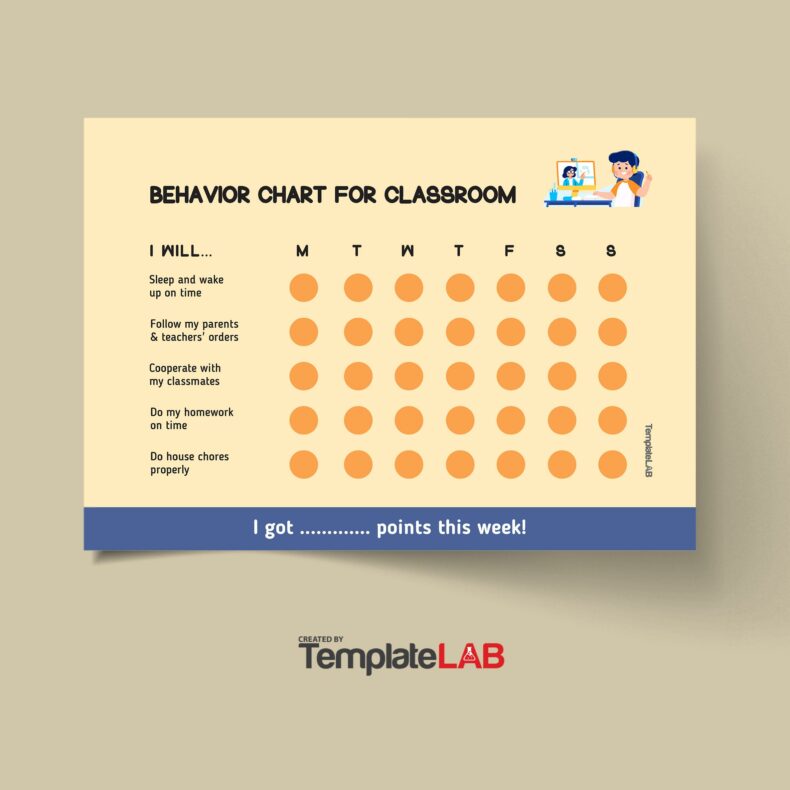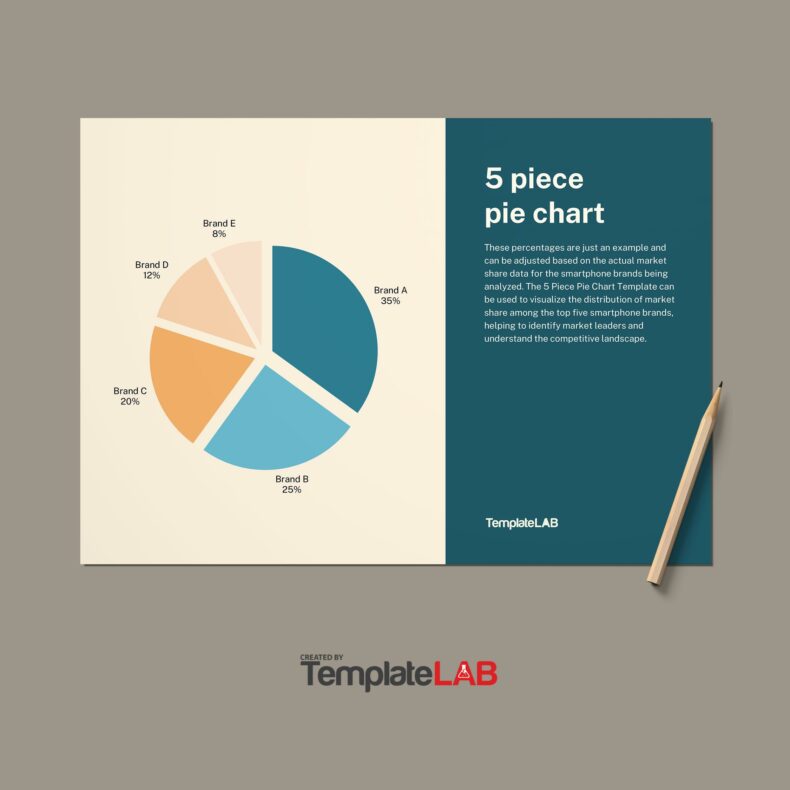Some countries in the world use a 24 hour clock. In other words, instead of saying 3 a.m. and 3 p.m. to distinguish between morning and afternoon times, they say 0300 and 1500. In many countries, this is the standard and is called the 24 hour clock.
In a few countries, like the U.S., a 12 hour clock is the standard default for the general population, but certain sub-populations, such as the military, use the 24 hour clock. In those countries, this is often referred to as military time.
For the sake of accuracy, actual military time has rules somewhat different from the general 24 hour clock. So while “military time” is sort of slang for the 24 hour clock, the actual military has its own peculiarities that are hard rules written up in regulations
Printable Military Time Charts
A military time chart can show you how to convert between the standard 12 hour clock in the U.S. and a 24 hour clock. Many civilians find the conversion process confusing. While the 12 hour clock is familiar, there are ways in which it is less accurate for conveying information. This is why the military and certain other organizations, such as hospitals, use a 24 hour clock even in countries that default to a 12 hour clock.
Some people find it really hard to make the conversion in their head. In such cases, a printable military time chart can be very handy. It can allow them to put a paper copy in their wallet and refer to it as needed.
Military Time Conversion Chart
A military time conversion chart isn’t really complete without some explanation as to the differences between the 12 hour clock and the 24 hour clock. Let’s start by talking a bit about the 12 hour clock.
On this clock, we use the abbreviations a.m. and p.m. to distinguish between “morning” and “afternoon” times. At least, that is how most people think of it. In truth, a.m. means ante meridiem — before midday — and p.m. means post meridiem — after midday. Midday is an old fashioned term for noon. Thus, a.m. times are between midnight and noon, and p.m. times are between noon and midnight.
In this system, poor handwriting or a bit of confusion can make it very unclear as to whether the time named meant morning or evening. Additionally, many people find it impossible to keep track of which 12 o’clock means midnight and which means noon. If you use 12 a.m. or 12 p.m. to refer to midnight and noon, many people will be unclear what time is meant. This is so true, AP Style guidelines require writers to say noon or midnight instead of 12 p.m. or 12 a.m.
So, using a 24 hour clock, such as that found in a military time chart, helps make it clear what time was intended. It helps improve accuracy of understanding when communicating about the time, whether in written form or verbally. The military is particularly interested in clear verbal communication, in part because the spoken word is particularly vulnerable to garbling communication.
Now, onto the 24 hour clock. Where the 12 hour clock runs from 1 through 12 twice, the 24 hour clock runs from 0 to 23. In this case, 0 is midnight and 23 is 11 p.m. In the actual military, all times are written with at least 4 digits, such that midnight is written as 0000 instead of as 0 and 11 p.m. is written as 2300 instead of just 23.
Because all four spaces must always be filled, most of the morning times start with a 0 as a place keeper. The hours from midnight to 9 a.m. are written with a leading zero. After that, the numbers start with a 1 or a 2, such as 1000 for 10 a.m. and 2200 for 10 p.m.
Military Time
The use of military time does not entirely clear up all confusion concerning certain times. In fact, it introduces new concerns specific to the expression of midnight. Although for start times, midnight is expressed as 0000 (or “zero hundred hours”), in some cases end times express midnight as 2400. In a few cases, times past midnight will be written as a value greater than 2400, such as listing 1 a.m. as 2500 in order to make it clear that it is later than an earlier listed time. For example, if a venue is only open from 7 p.m. to 1 a.m., expressing that as 1900 to 2500 intuitively makes more sense for the reader than 1900 to 0100.
Specific branches of the military or specific organizations that use the 24 hour clock sometimes have their own conventions and rules, such as running the clock from 0001 to 2400 or running the clock from 0000 to 2359. Occasionally, these rules get changed and then the official guide will be updated with those changes.
In addition to the rules surrounding how to refer to the hours of the day per se, military time also has conventions for referring to specific time zones. Conveniently, the English alphabet has 26 letters and the earth has 24 time zones. The military assigns each time zone a specific letter of the alphabet, plus assigns the letter J as “local time” and the letter Z as Greenwich Mean Time or UTC. When spoken, these are referred to as Juliet and Zulu.
Zulu time is in aviation because planes fly from time zone to time zone in very short order. It can also be used for other purposes where making sure that everyone knows with precision what time is intended, independent of their physical location.
Because of the need for accuracy and the many persnickety details that differentiate the 12 hour clock from the 24 hour clock, a military time conversion chart can come in handy for anyone who needs to convert between the two systems or even someone new to the 24 hour clock and still trying to understand it. Over time, using it consistently will make it more intuitive. However, for people who use the 12 hour clock most of the time, but must use the 24 hour clock intermittently, it can remain confusing.
Because it is used for the sake of accuracy with important work, like at hospitals, a printable military time chart can help civilians who are in need of learning to use it, like medical students. If you are new to such work, printing one and posting it near your workstation can help smooth the transition. An accurate, but poorly understood and poorly applied tool is not much, if any, improvement over an inaccurate one.

